
Kherson Region: The Gateway to Ukraine's Natural Splendor
Discover the Kherson Region: A fusion of natural wonders, historical treasures, and culinary delights in the heart of southern Ukraine.
The Kherson Region in Ukraine is a hidden gem for travelers seeking a blend of natural beauty, cultural richness, and historical intrigue. Located in the south of Ukraine, this region offers a unique tapestry of landscapes, from the vast steppes to the serene shores of the Black Sea. The Dnipro River gracefully winds through the area, providing scenic views and opportunities for water-based activities like boating and fishing. One of the highlights of the Kherson Region is the Askania-Nova Biosphere Reserve. This UNESCO World Heritage site is home to a diverse range of flora and fauna, including rare species that roam freely in its expansive grounds. It's an ideal destination for nature lovers and those interested in wildlife photography. History enthusiasts will find the Kherson Region equally compelling. The region is dotted with ancient fortresses, including the Oleshky Sands, the largest expanse of sand in Europe, and the remnants of the once-powerful Kakhovka Fortress. These sites offer a glimpse into the region's storied past, from ancient times through the Soviet era. Additionally, the local cuisine is a delightful experience on its own. With its fertile lands, the Kherson Region is known for its fresh produce, including the famous Kherson watermelons. Local markets and restaurants offer a chance to savor traditional Ukrainian dishes made from the freshest ingredients. Whether you're exploring its natural reserves, delving into its rich history, or indulging in its culinary delights, the Kherson Region promises an unforgettable journey.
Local tips in Kherson Region
- Visit the Askania-Nova Biosphere Reserve early in the morning to avoid crowds and spot more wildlife.
- Carry cash, as some rural areas and small establishments may not accept credit cards.
- Sample the local produce at Kherson's vibrant markets, especially the famous watermelons in summer.
- Wear comfortable shoes for exploring the vast Oleshky Sands and other natural reserves.
- If you plan to explore the Dnipro River, consider hiring a local guide for the best experience.
Kherson Region: The Gateway to Ukraine's Natural Splendor
The Kherson Region in Ukraine is a hidden gem for travelers seeking a blend of natural beauty, cultural richness, and historical intrigue. Located in the south of Ukraine, this region offers a unique tapestry of landscapes, from the vast steppes to the serene shores of the Black Sea. The Dnipro River gracefully winds through the area, providing scenic views and opportunities for water-based activities like boating and fishing. One of the highlights of the Kherson Region is the Askania-Nova Biosphere Reserve. This UNESCO World Heritage site is home to a diverse range of flora and fauna, including rare species that roam freely in its expansive grounds. It's an ideal destination for nature lovers and those interested in wildlife photography. History enthusiasts will find the Kherson Region equally compelling. The region is dotted with ancient fortresses, including the Oleshky Sands, the largest expanse of sand in Europe, and the remnants of the once-powerful Kakhovka Fortress. These sites offer a glimpse into the region's storied past, from ancient times through the Soviet era. Additionally, the local cuisine is a delightful experience on its own. With its fertile lands, the Kherson Region is known for its fresh produce, including the famous Kherson watermelons. Local markets and restaurants offer a chance to savor traditional Ukrainian dishes made from the freshest ingredients. Whether you're exploring its natural reserves, delving into its rich history, or indulging in its culinary delights, the Kherson Region promises an unforgettable journey.
When is the best time to go to Kherson Region?
Iconic landmarks you can’t miss
park Slavy
Experience the natural beauty and cultural richness of Park Slavy in Kherson, a must-visit destination for all nature lovers and history enthusiasts.

Khersonsʹkyy Hrand Kanʹyon
Discover the breathtaking Khersons'kyy Hrand Kan'yon, a nature preserve and tourist attraction in Kherson Oblast, Ukraine, perfect for adventure seekers and nature lovers.

Kherson Regional Museum
Uncover the heritage of Kherson at the Regional Museum, where history and culture come alive through engaging exhibits and local stories.

Eternal flame
Discover the Eternal Flame in Kherson, a moving memorial park dedicated to honoring the brave souls who fought for freedom and peace.

Dzharylhach
Discover Dzharylhach, Ukraine's serene island paradise, where stunning beaches, vibrant wildlife, and rich history await your exploration.
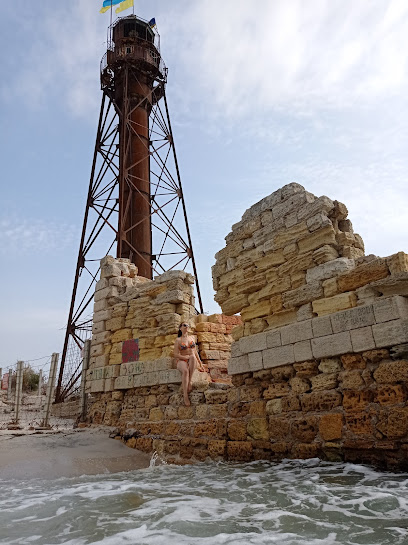
Park Slavy
Explore Park Slavy in Nova Kakhovka, a memorial park that beautifully intertwines history and nature, offering a peaceful retreat for reflection.
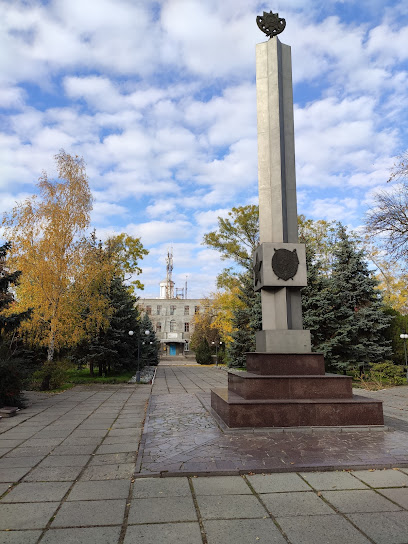
Kherson Regional Art Museum
Explore the artistic essence of Ukraine at Kherson Regional Art Museum, showcasing a rich collection of local and international art.

Tykha Havanʹ
Discover tranquility at Tykha Havan', a charming hotel in Kherson, where comfort meets the beauty of Ukrainian landscapes.

Black Sea Biosphere Reserve
Explore the breathtaking Black Sea Biosphere Reserve, a UNESCO site offering stunning landscapes, diverse wildlife, and unforgettable outdoor adventures.

Moscow gate
Discover the historical significance of the Moscow Gate, a key landmark in Kherson showcasing the city's rich cultural heritage and stunning architecture.

Masonsʹkyy Budynok
Explore Masons'kyy Budynok, a historical gem in Kruhloozerka, Kherson Oblast, showcasing rich architecture and vibrant local culture.

Neskorenykh Square
Explore Neskorenykh Square in Kherson, where culture, history, and vibrant local life converge in the heart of Ukraine's charming city.

Unmissable attractions to see
Potomkinskyi Garden Square
Explore Potomkinskyi Garden Square, a beautiful park in Kherson that offers tranquility, cultural events, and picturesque landscapes for every traveler.

Shumensʹkyy Park
Discover the serene beauty of Shumens'kyy Park in Kherson, a perfect retreat for nature lovers and families alike.

Khersonsʹkyy Hrand Kanʹyon
Discover the breathtaking beauty of Khersons'kyy Hrand Kan'yon in Ukraine, a nature preserve where adventure meets tranquility.
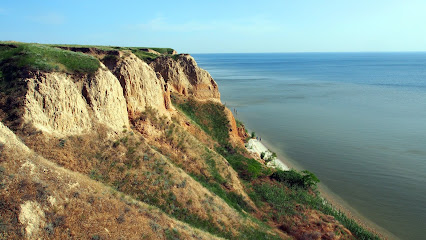
The Oak
Discover tranquility at The Oak, Kherson's serene park filled with lush greenery, perfect for relaxation and leisure activities for all ages.
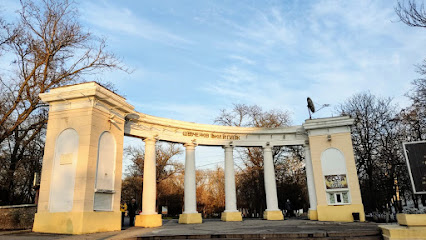
St. Catherine's Cathedral
Discover the architectural beauty and spiritual significance of St. Catherine's Cathedral in Kherson, a must-see tourist attraction.

Kherson Regional Museum
Explore the rich history and heritage of Kherson at the Kherson Regional Museum, where local culture comes to life through fascinating exhibits.

Vodospady Trubetsʹkoho
Explore Vodospady Trubetskogo, an enchanting waterfall destination in Kherson Oblast, where nature's beauty and tranquility await.

Eternal flame
Explore the Eternal Flame in Kherson, a serene memorial park honoring the sacrifices of heroes, symbolizing resilience and hope for future generations.

Svyatodukhivsʹkyy Sobor Rptsvu
Explore the awe-inspiring Svyatodukhivskyy Sobor, a masterpiece of Orthodox architecture in Kherson, where culture and spirituality converge.

Park Slavy
Discover the tranquil beauty of Park Slavy, a memorial park in Nova Kakhovka that honors history amidst lush landscapes and serene paths.

Naval Cathedral of St. Nicholas
Discover the spiritual heart of Kherson at the Naval Cathedral of St. Nicholas, a stunning Orthodox masterpiece with rich history and breathtaking architecture.

Pankrativskiy bridge
Explore the Pankrativskiy Bridge in Kherson, a historical landmark offering stunning views and a glimpse into the city's rich architectural heritage.

Aleya Slavy
Discover the serene landscapes and vibrant flora of Aleya Slavy Park, an oasis of tranquility in Hola Prystan', perfect for relaxation and exploration.

Viddil Pryrody Krayeznavchoho Muzeyu
Explore the captivating natural history and biodiversity of Kherson at Viddil Pryrody Krayeznavchoho Muzeyu, a premier museum for nature enthusiasts.

Monument to the First Shipmen
Explore the Monument to the First Shipmen in Kherson, a historic tribute to maritime pioneers surrounded by beautiful landscapes and vibrant culture.

Essential places to dine
Fabrika Mall
Explore shopping, dining, and entertainment at Fabrika Mall in Kherson—your ultimate destination for fun-filled experiences.

McDonald's
Enjoy delicious fast food at McDonald's in Kherson - where familiar flavors meet local charm.

Pitseriya Na Lenina
Discover the authentic taste of Italy at Pitseriya Na Lenina, Kherson's beloved pizzeria offering delicious pizzas made with fresh ingredients.

Al Capone
Experience authentic Ukrainian cuisine at Al Capone in Kherson – where every dish tells a story.

Pan Otaman
Discover the essence of Ukrainian cuisine at Pan Otaman, where every dish tells a story and every bite delights your senses.

МОНЯ, КАФЕ
Discover the charm of МОНЯ, КАФЕ in Kherson - where delightful cuisine meets cozy ambiance.

Lito
Discover Lito Cafe in Kherson - where traditional Ukrainian flavors meet a cozy ambiance in the heart of the city.

Verona
Experience authentic European cuisine and exceptional coffee at Verona, Kherson's beloved dining gem.

Terasa
Discover culinary excellence at Terasa in Kherson - where exquisite flavors meet stunning views for an unforgettable dining experience.
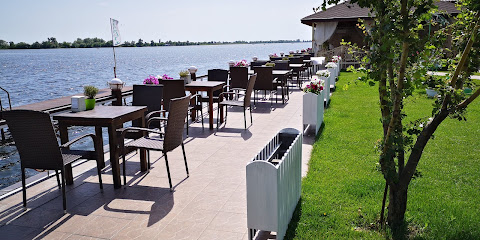
Казбек | Грузинський ресторан
Discover authentic Georgian flavors at Kazbek Restaurant in Kherson – where every dish tells a story.

Park Avenyu
Discover the flavors of Ukraine at Park Avenyu - where culinary excellence meets stunning riverside views.
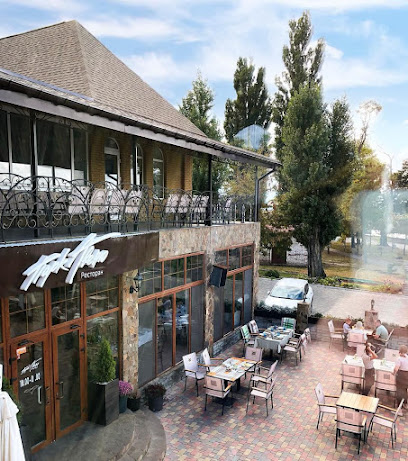
Kabanos
Discover Kabanos in Kherson: where exquisite cuisine meets exceptional service for an unforgettable dining experience.

Kit Na Dakhu
Discover the cozy ambiance and delicious offerings at Kit Na Dakhu in Kherson—a must-visit cafe for food lovers.

Chornyy Husʹ
Experience authentic Ukrainian cuisine at Chornyy Husʹ in Kherson – where tradition meets flavor in every dish.
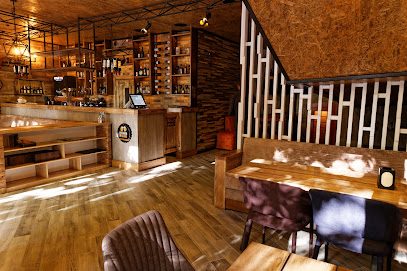
Mirakoli
Discover Mirakoli in Kherson – a cozy cafe offering delicious local and international cuisine in a warm atmosphere.

Markets, malls and hidden boutiques
Tts Admiral
Discover Tts Admiral in Kherson: a vibrant shopping mall offering diverse retail, dining, and family-friendly entertainment experiences.

Lviv Handmade Chocolate
Experience the magic of artisanal chocolate at Lviv Handmade Chocolate, where sweet moments await in a cozy Kherson coffee shop.

Prostir.coffee
Explore Prostir.coffee in Kherson for exceptional brews, freshly baked pretzels, and unique souvenirs in a cozy atmosphere.

I love coffee
Explore the charming 'I Love Coffee' in Kherson, where every cup tells a story and every visit is a cozy retreat.

Центр туризма и приключений ХерсON
Discover Kherson's Adventure Center, your gateway to thrilling boat rentals and unforgettable outdoor experiences in Ukraine.

confectionery shop Dessert
Discover the sweetest delights at Kherson’s premier confectionery shop, where every dessert is a masterpiece waiting to be savored.

Chukh-Chukh
Explore Chukh-Chukh in Kherson for top-quality children's clothing, furniture, and toys, creating a perfect shopping experience for families.

Knyzhkovyy Klub Simeynoho Dozvillya
Explore Knyzhkovyy Klub Simeynoho Dozvillya, a charming book store in Kherson, perfect for literature lovers and cultural seekers.

FRUMAN light cafe
Discover the warm ambiance and delightful flavors of FRUMAN Light Cafe in Kherson - your perfect coffee retreat.

Pyshna Krasa
Explore Pyshna Krasa in Kherson: Your destination for stylish plus size fashion that celebrates every body.

Пятачок
Discover unique Ukrainian fashion at Пятачок in Kherson, where vibrant styles and local charm come together for an unforgettable shopping experience.

Kavomolka
Discover Kavomolka, Kherson's charming coffee shop, offering a cozy atmosphere and a delightful selection of beverages and pastries.

Domani, МАГАЗИН
Discover the latest trends at Domani, a premier clothing store in Kherson offering stylish apparel and accessories for every occasion.

Wolmar
Discover Wolmar Coffee Shop: a cozy haven in Kherson, offering specialty brews and a warm atmosphere perfect for relaxation.

Светлый дом
Explore Svetlyy Dom, Kherson's charming home goods store, offering unique decor and souvenirs that embody local craftsmanship and culture.

Essential bars & hidden hideouts
Beer Bar
Discover the vibrant beer culture of Kherson at Beer Bar, where local brews and a welcoming atmosphere await every visitor.

I'll Call You Back
Discover a lively bar in Kherson with an extensive drink menu, perfect for unwinding and socializing after a day of exploration.

Dzbanek
Discover Dzbanek in Kherson, a vibrant pub offering authentic Ukrainian cuisine and a lively atmosphere perfect for tourists seeking local culture.

Locals Only
Discover the vibrant local pub experience at Locals Only in Kherson, where great drinks and lively ambiance meet Ukrainian culture.

Fitzgerald Pub&Kitchen
Discover the lively atmosphere and delicious fare at Fitzgerald Pub & Kitchen, a must-visit pub in Kherson for every traveler.

VESPER cocktail bar
Indulge in exquisite cocktails and authentic Italian cuisine at VESPER Cocktail Bar, the perfect spot for a stylish night out in Kherson.

HotЕнот паб
Discover the lively HotЕнот Pub in Kherson, where local flavors meet a vibrant atmosphere for an unforgettable dining experience.

GriVa
Discover the vibrant nightlife at GriVa in Kherson - a fusion of pub, disco, and dining experience for every visitor.

Кафе-бар Пивная Заправка
Discover the vibrant atmosphere of Kафе-бар Пивная Заправка, where local flavors and friendly vibes come together in Kherson.

The times bar
Experience Kherson’s nightlife at The Times Bar, a cozy bar offering local drinks and live music in a vibrant atmosphere.

BAR LAB.
Discover the vibrant nightlife of Kherson at Bar Lab, where creative cocktails and warm hospitality await you.

Beerlin
Discover Beerlin in Kherson: where great beer meets a vibrant atmosphere for unforgettable moments.

Play&Up
Experience the lively atmosphere of Play&Up, a top bar in Kherson, where great drinks and friendly vibes await every visitor.
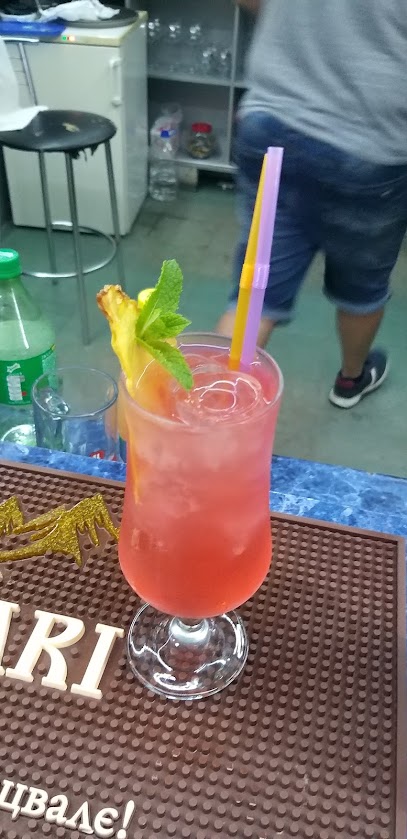
Рюмочная
Discover the lively atmosphere and local flavors at Рюмочная, a charming bar in Kherson, Ukraine, perfect for unwinding after a day of exploration.

Подкова
Discover the heart of Kherson at Подкова, a cozy bar offering a warm atmosphere and delightful drinks to unwind in style.

Local Phrases about Kherson Region
-
- HelloПривіт
[Pryvit] - GoodbyeДо побачення
[Do pobachennya] - YesТак
[Tak] - NoНі
[Ni] - Please/You're welcomeБудь ласка
[Budʹ laska] - Thank youДякую
[Dyakuyu] - Excuse me/SorryВибачте
[Vybachte] - How are you?Як справи?
[Yak spravy?] - Fine. And you?Добре. А ви?
[Dobre. A vy?] - Do you speak English?Ви говорите англійською?
[Vy hovoryte anhliysʹkoyu?] - I don't understandЯ не розумію
[Ya ne rozumiyu]
- HelloПривіт
-
- I'd like to see the menu, pleaseЯ б хотів подивитися меню, будь ласка
[Ya b hotiv podyvytysya menyu, budʹ laska] - I don't eat meatЯ не їм м'ясо
[Ya ne yim m'yaso] - Cheers!Будьмо
[Budʹmo] - I would like to pay, pleaseЯ б хотів заплатити, будь ласка
[Ya b hotiv zaplatyty, budʹ laska]
- I'd like to see the menu, pleaseЯ б хотів подивитися меню, будь ласка
-
- Help!Допоможіть!
[Dopomozhitʹ!] - Go away!Іди геть!
[Idy hetʹ!] - Call the Police!Викличте поліцію!
[Vyklіchte polіtsіyu!] - Call a doctor!Викличте лікаря!
[Vyklіchte lіkarya!] - I'm lostЯ загубився
[Ya zahubyvsya] - I'm illЯ хворий
[Ya khvoryy]
- Help!Допоможіть!
-
- I'd like to buy...Я б хотів купити...
[Ya b hotiv kupyty...] - I'm just lookingЯ просто дивлюсь
[Ya prosto dyvlyusʹ] - How much is it?Скільки це коштує?
[Skilʹky tse koshtuye?] - That's too expensiveЦе занадто дорого
[Tse zanadto doroho] - Can you lower the price?Чи можете ви знизити ціну?
[Chy mozhete vy znyzyty tsinu?]
- I'd like to buy...Я б хотів купити...
-
- What time is it?Котра година?
[Kotra hodyna?] - It's one o'clockОдна година
[Odna hodyna] - Half past (10)Пів на (десяту)
[Piv na (desyatu)] - MorningРанок
[Ranok] - AfternoonДень
[Denʹ] - EveningВечір
[Vechir] - YesterdayВчора
[Vchora] - TodayСьогодні
[Sʹohodni] - TomorrowЗавтра
[Zavtra] - 1Один
[Odyn] - 2Два
[Dva] - 3Три
[Try] - 4Чотири
[Chotyry] - 5П'ять
[P'yatʹ] - 6Шість
[Shistʹ] - 7Сім
[Sim] - 8Вісім
[Visim] - 9Дев'ять
[Dev'yatʹ] - 10Десять
[Desyatʹ]
- What time is it?Котра година?
-
- Where's a/the...?Де є...?
[De ye...?] - What's the address?Яка адреса?
[Yaka adresa?] - Can you show me (on the map)?Чи можете ви мені показати (на карті)?
[Chy mozhete vy meni pokazaty (na karti)?] - When's the next (bus)?Коли наступний (автобус)?
[Koly nastupnyy (avtobus)?] - A ticket (to ....)Квиток (до ....)
[Kvytok (do ....)]
- Where's a/the...?Де є...?
History of Kherson Region
-
Kherson Region, historically known as the land of the Scythians, boasts a rich history dating back to ancient times. The Scythians, a group of nomadic warriors, inhabited the area around the 7th century BC. Their influence is evident in the numerous burial mounds, known as kurgans, spread across the region. These mounds serve as a testament to the Scythian's sophisticated craftsmanship and their advanced skills in metalwork and horsemanship.
-
In the 5th century BC, Greek colonists established trading posts along the Black Sea coast, including in what is now the Kherson Region. The most notable of these was Olbia, an influential city-state that played a crucial role in the trade between the Greeks and the local tribes. The remains of this ancient city, located near today's village of Parutyne, offer a glimpse into the region's early connections with the classical world.
-
During the 7th to 10th centuries AD, the Kherson Region was part of the Khazar Khaganate, a powerful and multi-ethnic empire that controlled much of the Southern part of Eastern Europe. The Khazars, renowned for their commercial prowess and military strength, left a lasting impact on the region. Archaeological finds, including fortifications and artifacts, reflect the Khazar's influence on the local culture and economy.
-
In the late 10th century, the Kherson Region became part of the Kievan Rus', a federation of Slavic tribes under the rule of the Rurik dynasty. This period saw the spread of Christianity and the establishment of Slavic culture in the region. However, the Mongol-Tatar invasion in the 13th century brought significant devastation, leading to a period of decline and depopulation.
-
From the 15th to the 18th centuries, the Kherson Region was under the influence of the Ottoman Empire and its vassal, the Crimean Khanate. This era was marked by frequent conflicts and raids, but also by a rich cultural exchange. The remnants of Ottoman fortresses and the Tatar heritage, including mosques and mausoleums, highlight this tumultuous yet vibrant chapter in the region's history.
-
In 1778, Catherine the Great of Russia founded the city of Kherson as a naval base and shipyard for her new Black Sea Fleet. The city's strategic importance grew rapidly, and it became a center for trade and industry. The streets of Kherson are lined with architectural gems from this period, including the Admiralty Building and St. Catherine's Cathedral, reflecting the city's significance during the Russian Empire era.
-
Kherson Region, like much of Ukraine, endured significant hardship during World War II. Occupied by Nazi Germany from 1941 to 1944, the region witnessed intense fighting and severe destruction. Post-war, under Soviet rule, Kherson saw extensive industrialization and urban development. The legacy of this era is visible in the region's infrastructure, with numerous Soviet-style buildings and monuments commemorating the sacrifices of the war.
-
With Ukraine's declaration of independence in 1991, Kherson Region embarked on a new chapter. The region has since been developing its cultural and economic identity, balancing its rich historical legacy with modern aspirations. Today, Kherson is known for its agricultural prowess, picturesque landscapes, and efforts to preserve its diverse historical heritage. Visitors can explore a blend of ancient sites, Ottoman and Russian architecture, and vibrant contemporary culture.
Kherson Region Essentials
-
Kherson Region is accessible via multiple modes of transportation. The nearest international airport is Mykolaiv International Airport, around 60 kilometers from Kherson City. Alternatively, you can fly into Boryspil International Airport in Kyiv and then take a domestic flight or train to Kherson. Trains from Kyiv to Kherson are frequent and offer a comfortable journey. Buses and marshrutkas (minibuses) also operate from major Ukrainian cities to Kherson.
-
Within Kherson Region, you can use a variety of transportation options. Public buses and marshrutkas are widely available and connect most towns and villages. Taxis are readily available in Kherson City and other major towns. Renting a car can also be a convenient option for exploring more remote areas. Bicycles can be a great way to explore smaller towns and scenic routes along the Dnipro River.
-
The official currency in Ukraine is the Ukrainian Hryvnia (UAH). Credit cards are accepted in most hotels, restaurants, and larger shops in Kherson City. However, it is advisable to carry cash, especially when visiting smaller towns and rural areas. ATMs are available in urban centers, but it is wise to withdraw sufficient cash beforehand if you plan to travel to more remote locations.
-
Kherson Region is generally safe for tourists, but standard precautions should be taken. Avoid walking alone at night in unfamiliar areas and be vigilant about your belongings in crowded places. Some areas, particularly near the administrative boundaries, may have higher crime rates. It is advisable to stay updated on current events and avoid any regions that may be affected by political instability.
-
In case of emergency, dial 112 for immediate assistance. Medical facilities are available in Kherson City and other larger towns. It is recommended to have travel insurance that covers medical emergencies. Pharmacies are widely available for minor health issues. For any legal issues, contact your country's embassy or consulate in Ukraine for assistance.
-
Fashion: Do dress modestly, especially when visiting religious sites. Avoid overly revealing clothing. Religion: Do respect local customs and traditions. When visiting churches, cover your head and dress conservatively. Public Transport: Do be courteous and offer your seat to elderly passengers. Don't eat or drink on public transport. Greetings: Do greet people with a firm handshake. A smile and a slight bow are also appreciated. Eating & Drinking: Do try local dishes and accept food offerings graciously. Don't refuse hospitality as it may be considered impolite.
-
To experience Kherson Region like a local, visit the local markets to buy fresh produce and traditional Ukrainian goods. Engage with locals, who are often friendly and eager to share stories about their homeland. Don't miss the chance to explore the Dnipro River by boat, an activity cherished by locals. Visit the Tavria Steppe and Askania-Nova, a biosphere reserve, for a unique experience of Ukraine's natural beauty.
Nearby Cities to Kherson Region
-
Things To Do in Kryvyi Rih
-
Things To Do in Kropyvnytskyi
-
Things To Do in Simferopol
-
Things To Do in Tiraspol
-
Things To Do in Zaporozhye
-
Things To Do in Zaporizhzhia
-
Things To Do in Sevastopol
-
Things To Do in Kremenchuk
-
Things To Do in Chișinău
-
Things To Do in Orhei
-
Things To Do in Cherkasy
-
Things To Do in Kerch
-
Things To Do in Poltava
-
Things To Do in Mariupol
-
Things To Do in Iasi








